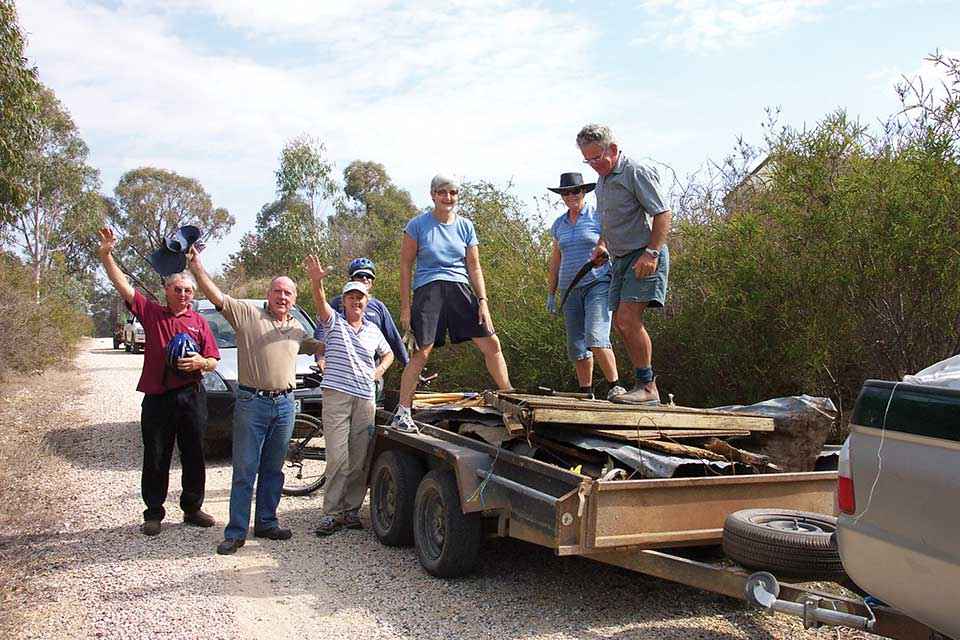Victorian Landcare Magazine - Spring 2020, Issue 79

Community discussions about developing the old Cudgewa rail line in north east Victoria into the High Country Rail Trail got underway in the 1990s. Parklands Albury Wodonga (PAW) was appointed as Committee of Management for the first 40 kilometres of the trail in 2000.
The community got cracking with restoration works along the degraded rail corridor between Wodonga and Cudgewa, including the regeneration of native ecosystems and restoration of a number of historic timber trestle bridges.
Three dedicated volunteer groups were formed along the rail corridor: the Bonegilla Advisory Group, Tallangatta Advisory Group and Koetong-Shelley Development Association. The groups had regular planning meetings and working bees. In the first six years more than 865 volunteers contributed in excess of 37,239 volunteer hours in developing, managing and marketing the trail.
Since then in-kind contributions, fundraising and project funding secured by PAW has enabled fencing and revegetation of more than 80 kilometres of the corridor.
The rail trail traverses a variety of environments and altitudes, from the wetlands and floodplains of the Kiewa River, through fertile farmland on the slopes to the steep forested hills of the high country.
Grasslands have been managed in partnership with local CFA units, with a three-yearly burning regime resulting in the return of quality native grasses. These burns have also been valuable training exercises for new CFA recruits.
The cluster revegetation of native trees and shrubs on former farmland has resulted in connected corridors providing habitat for native fauna to travel through and adapt to climate change.
Where the trail traverses farmland, fencing combined with new lease arrangements has enabled management for the regeneration of native ecosystems. Changing from permanent grazing to environmental grazing has seen native wetland grasses regenerate and eliminated pugging during the winter months.
Public awareness has grown from the ground up. Thousands of individuals, groups, businesses, schools and clubs have been involved through community planting days, fundraisers and working bees. The restoration of historic trestle bridges on the route has attracted specialist groups including the Puffing Billy Preservation Society.
The trail is used by walkers, cyclists and horse riders. Events such as the Sandy Creek Bridge Walk, Whistle Stop High Tea, cycle tours, railway history walks, and natural and cultural heritage activities are hugely popular. Community members recently contributed artwork and designed signs to raise awareness of the environment and cultural heritage assets along the trail.
Over 20 years the High Country Rail Trail has evolved from being a fragmented and neglected remnant of history to an iconic rail corridor connecting the legendary Victorian High Country to the mighty Murray River.
Anne Stelling is Communications Ranger with Parklands Albury Wodonga.
For more information email Anne@parklands-alburywodonga.org.au